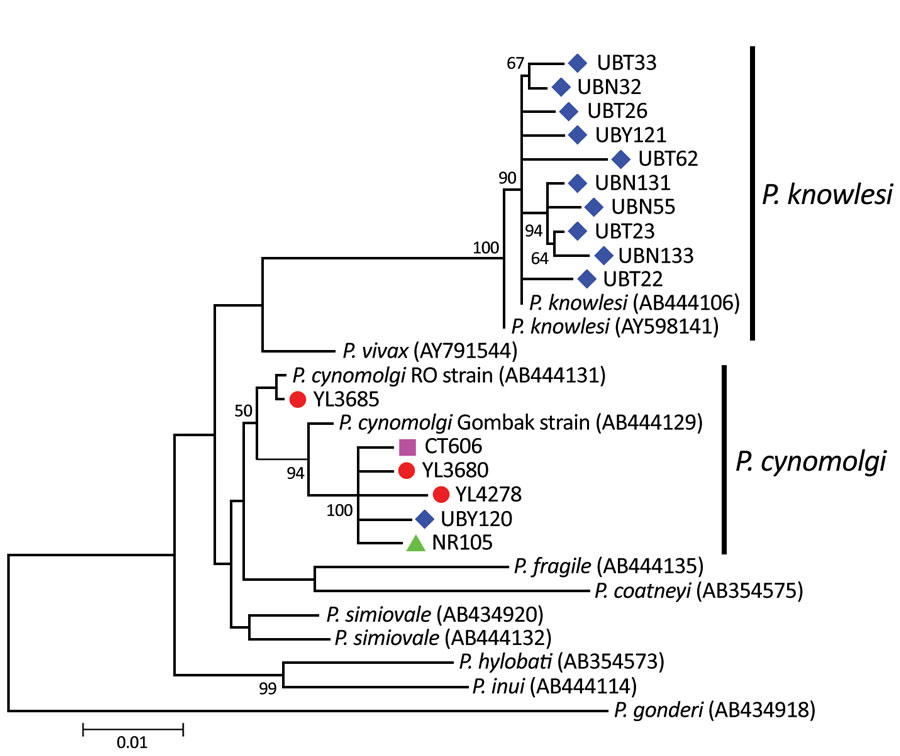Volume 27, Number 2—February 2021
Dispatch
Plasmodium cynomolgi Co-infections among Symptomatic Malaria Patients, Thailand
Figure

Figure. Maximum-likelihood phylogenetic tree inferred from mitochondrially encoded cytochrome c oxidase I of Plasmodium cynomolgi and P. knowlesi from Thailand compared with other closely related species. Tree spans 1,318-bp region. Colors indicate province where human isolates were found: red circles, Yala; green triangles, Narathiwat; purple squares, Chanthaburi; and blue diamonds, Ubon Ratchathani. GenBank accession numbers of reference sequences are given in parentheses. Bootstrap values >50% based on 1,000 pseudoreplicates are shown on the branches. Scale bar indicates nucleotide substitution per site.
Page created: November 10, 2020
Page updated: January 24, 2021
Page reviewed: January 24, 2021
The conclusions, findings, and opinions expressed by authors contributing to this journal do not necessarily reflect the official position of the U.S. Department of Health and Human Services, the Public Health Service, the Centers for Disease Control and Prevention, or the authors' affiliated institutions. Use of trade names is for identification only and does not imply endorsement by any of the groups named above.